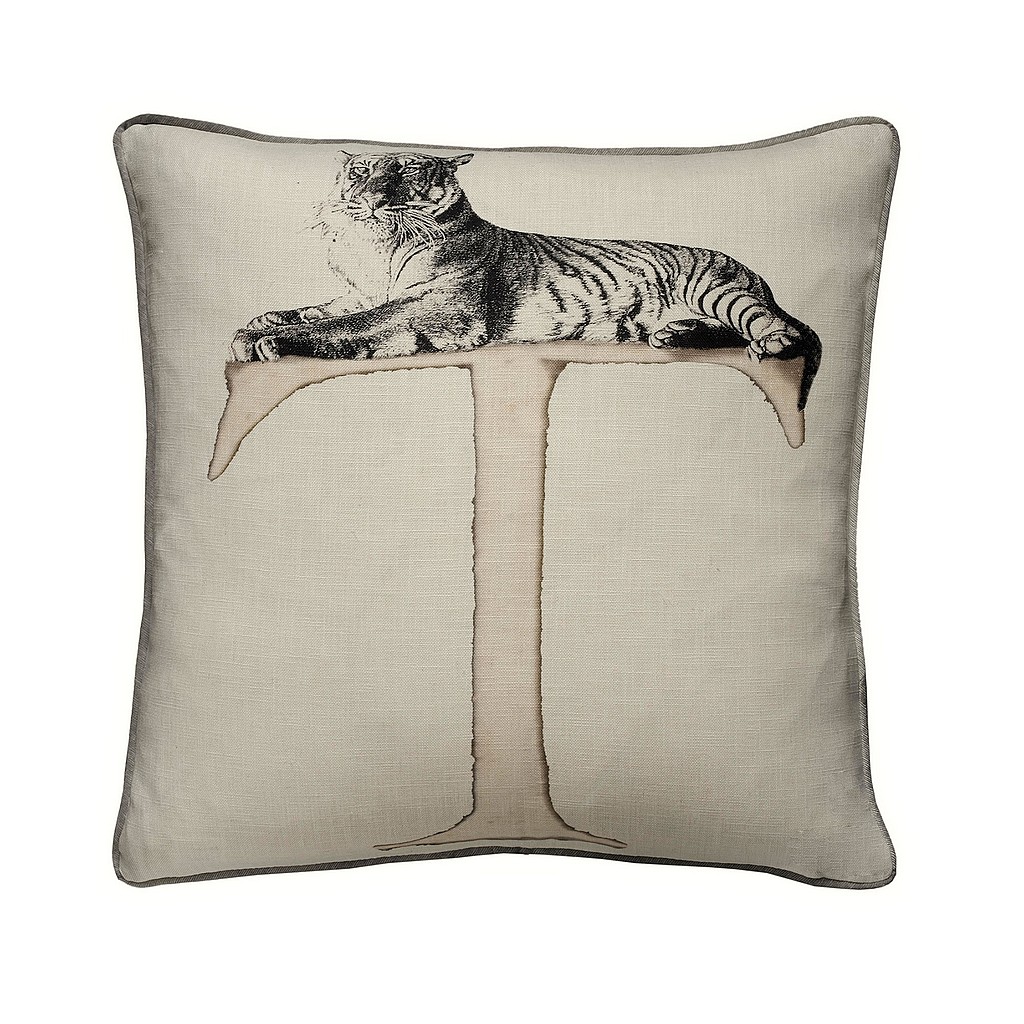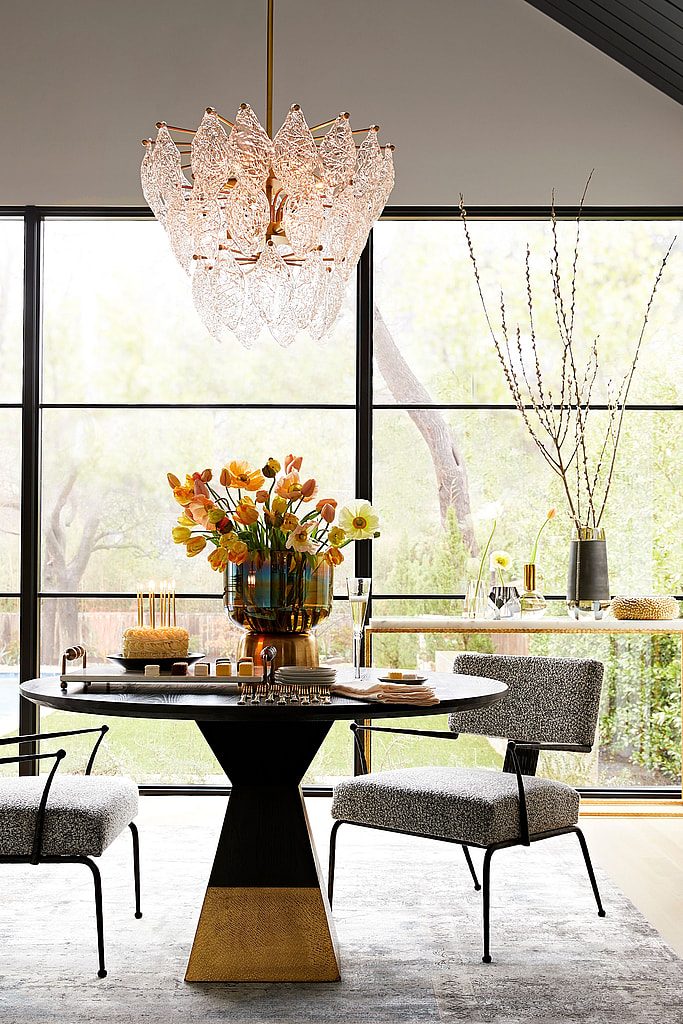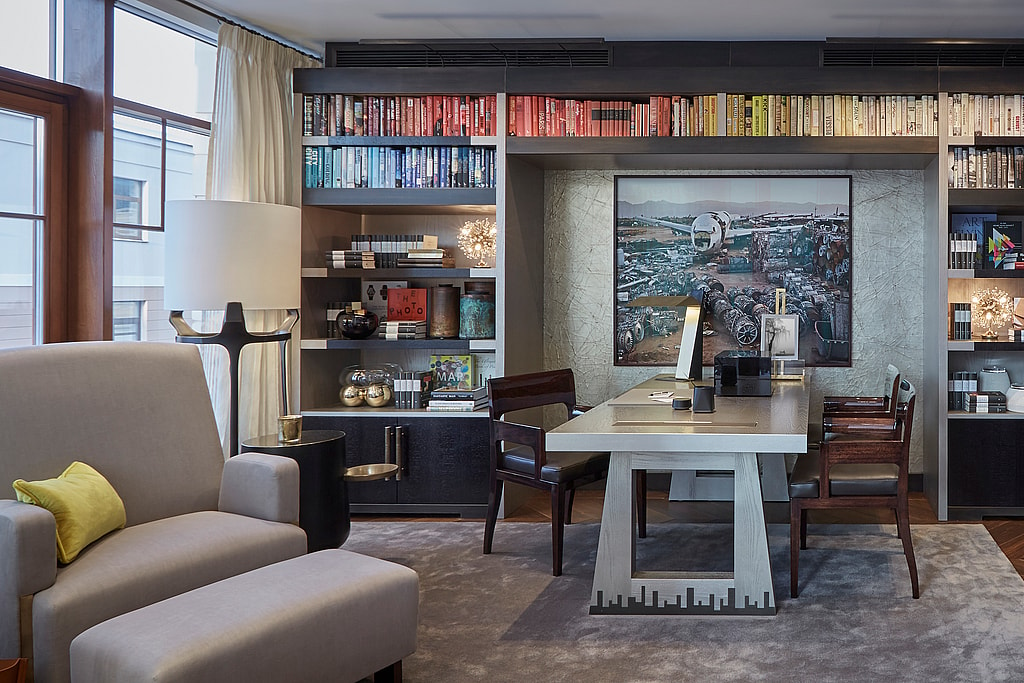The Spending Shift
Mid-March marks a year since people’s lives were turned upside down. The last 12 months have seen significant shifts in spending, but in some ways the design industry is riding the storm: with travel and leisure curtailed, our attention has naturally turned to the place we’re spending so much time – home. Whether we’re creating a better environment for home-working or we’ve finally found the time for that long-held-off redecorating project, many of us have been busy upgrading our interiors.
Design Centre, Chelsea Harbour asked its showrooms what broad trends they had observed over the year, in order to see the bigger picture about how our needs and tastes might have changed.
Quick and easy fixes were the first to see a boost, according to Andrew Martin, which reports a 40% increase in the sale of cushions – the company now sells one every six minutes and recently added the ‘Animal Alphabet’ examples pictured above. “Lockdown has left us analysing every element of our lives and particularly our homes,” says design director David Harris. “Spending so much time surrounded by our own four walls has driven us to change the things that surround us, and cushions are an instant way to change the interior of any room. Sales have boomed as a result.”
A change of lampshade also seems to be on consumers’ lists of simple upgrades: David Hunt Lighting says that its sister company The Light Shade Studio has seen an uplift in bespoke orders, where shades can be specified in any fabric (pictured above left).
Unsurprisingly, as it became apparent that working from home was going to be a long-term measure rather than a couple of weeks at the kitchen table, creating dedicated work space became a priority. Original BTC report that sales of desk and clip lights (such as the ‘Hector Pleat’ clip-on pictured above centre) were up 30% at the beginning of 2021 compared to the same period the previous year.
However, it’s not all about practical task-lighting: some of us are becoming braver and bolder, investing in hero pieces that make a statement, such as Arteriors’ ‘Delilah’ chandelier, pictured above right. “We’ve seen a demand for jewellery pieces – those statement lighting designs which really add something different and special to the home,” says Arteriors’ Helen Pett. “In the past, these were more common in commercial and trade customers designing hotels and restaurants: residential is normally where we’d see most of our more pared-back pendant lighting sales – but everything has phased a little differently in 2020. Perhaps rather than buying a new house, people are choosing to renovate and update their homes with luxury pieces which ultimately add value – along with style – to existing schemes.”
The idea of investing in the best also resonates with Perrin & Rowe and Victoria + Albert Baths, sister brands working in the kitchen and bathroom industry. Brand manager Emma Joyce says that sales were “very strong” in the third quarter of 2020 as home improvements accelerated after the first lockdown. “The more time we spend in our homes, the more we realise what’s wrong with them,” she says. “It may be that money allocated to annual holidays is being reinvested in these projects, and with more time to research and identify the ‘best in class’ products, consumers are choosing from the higher quality, artisan manufacturers.” Pictured are Victoria + Albert Baths’ ‘Ios’ bath with a Perrin & Rowe ‘Hoxton’ mixer (above left) and a Perrin & Rowe basin mixer with ‘Country’ spout and ‘Crosstop’ handles (above right).
Buying trends for particular colours or materials are harder to pin down: perhaps we are all discovering a new-found individual personal expression, rather than following the herd. Marvic Textiles reports an uplift in sales of its simple Belgian linen (pictured above left), while Porta Romana says that its white plaster collection (pictured above right) has been hugely popular – and while at first glance these two types of product might not have anything in common, both are tactile and celebrate imperfection. They both speak of the connection between the maker and the end user. So perhaps it is no surprise that, in a year when face-to-face contact was largely off the menu, we have relied on design to provide the human touch.



















